-
History & Society
- Education in Pre-war Hong Kong
- History of Taikoo Sugar Refinery
- Hong Kong Products Exhibition
- Local Festivals Around the Year
- Post-war Industries
- Pre-war Industry
- The Hong Kong Jockey Club Archives
- Tin Hau Festival
- Memories We Share: Hong Kong in the 1960s and 1970s
- History in Miniature: The 150th Anniversary of Stamp Issuance in Hong Kong
- A Partnership with the People: KAAA and Post-war Agricultural Hong Kong
- The Oral Legacies (I) - Intangible Cultural Heritage of Hong Kong
- Hong Kong Currency
- Hong Kong, Benevolent City: Tung Wah and the Growth of Chinese Communities
- The Oral Legacies Series II: the Representative List of the Intangible Cultural Heritage of Hong Kong
- Braving the Storm: Hong Kong under Japanese Occupation
- A Century of Fashion: Hong Kong Cheongsam Story
Geography & EnvironmentArt & Culture- Calendar Posters of Kwan Wai-nung
- Festival of Hong Kong
- Ho Sau: Poetic Photography of Daily Life
- Hong Kong Cemetery
- Sketches by Kong Kai-ming
- The Culture of Bamboo Scaffolding
- The Legend of Silk and Wood: A Hong Kong Qin Story
- Journeys of Leung Ping Kwan
- From Soya Bean Milk To Pu'er Tea
- Applauding Hong Kong Pop Legend: Roman Tam
- 他 FASHION 傳奇 EDDIE LAU 她 IMAGE 百變 劉培基
- A Eulogy of Hong Kong Landscape in Painting: The Art of Huang Bore
- Imprint of the Heart: Artistic Journey of Huang Xinbo
- Porcelain and Painting
- A Voice for the Ages, a Master of his Art – A Tribute to Lam Kar Sing
- Memories of Renowned Lyricist: Richard Lam Chun Keung's Manuscripts
- Seal Carving in Lingnan
- Literary Giant - Jin Yong and Louis Cha
-
History & SocietyGeography & EnvironmentArt & Culture
-
View Oral History RecordsFeatured StoriesAbout Hong Kong Voices
-
Hong Kong Memory
- Collection
- All Items
- Skilled labour on production line
Recently VisitedSkilled labour on production line
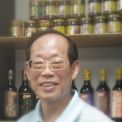
- Amoy’s basketball team played in open matches. Workers composed the Amoy song and celebrated fes...
The basketball team formed by Amoy’s employees participated in matches for the annual Factory Cup tournament. Organised by the Hong Kong Basketball Association, this challenge was open to all factories in Hong Kong. Later, Amoy’s management hired top local basketball stars to form a professional team and participate in open matches in Hong Kong and Singapore for promotional purposes. The professional team was coached by Shek Chun Tat and had famous players like Ng Yet Ang, Joachim H. L. Poon and Yung Pi Hock. When not playing in open matches, the pros played against teams of employees in order to allow the staff players to sharpen their skills. Called the Lucky Team, the Amoy employees’ team played in two or three open matches and was rated as being a dark horse by the press. The staff team was organised by Amoy’s senior accountant Wong Ching Hang. In those years, Radio Hong Kong visited factories and interviewed people there for broadcast every Saturday. Amoy was among the companies whose staff was interviewed. Wong Ching Hang composed the Amoy company song “The One Family of Amoy” and Radio Hong Kong recorded and broadcast it. Wong Wing Man still remembers a few lines of the song he and his colleagues would sing together during festival celebrations! Wong Ching Hang was later promoted as the manager of Amoy’s paper products factory.
During traditional celebrations such as Chinese New Year and Mid Autumn Festival, Amoy either added more dishes to its usual menu or threw parties in the canteen so its employees could celebrate.
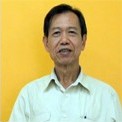
- Training programme of apprentices at South Sea Textiles
Conditions of the dormitories at South Sea Textiles. Hui joined South Sea Textiles in 1969. The first year he was taking classes at the staff quarter. The company required the apprentices to live at the quarter and they could go home once a week. The were 20 in the class and they were all male. There were a small canteen, a classroom and an activity room on the ground floor of the staff quarter. Upper floors were living quarters. The staff quarter was only for men, and six men would occupy one room. There were six beds, six closets and six desks in one room. Other than the staff quarter, there were also male and female living quarters for workers.
Education background of the apprentices of South Sea Textiles. The apprentices were all secondary school graduates. They were around the same age with only two to three years apart. South Sea Textiles was the largest factory in Hong Kong at that time. The company also ran South Sea English Secondary School. The school took part-time workers as students, and provided free education from Form One to Five. Part-time workers would study at the school in the morning, and work in the factory for four hours each day. Free accommodation was provided. Among those who joined as apprentices with Hui at the same year, three of them studied at South Sea English Secondary School. They either started from Form One, or transferred to the school at Form Four or Five. They had worked at the factory for two to three years. The three apprentices all finished their secondary school, with five passes at the HKCEE, and then they joined as apprentices. Some twenty years later, Hui met a fellow apprentice in Shatin. He learned that this fellow apprentice studied at South Sea English Secondary School because he wanted to go to school but his family was poor. The school provided education and free accommodation even though the students were required to work at the same time.
Instructors of the training programme for apprentices, and programme schedule
Those who joined as apprentices a few years before Hui were trained at the Hong Kong Polytechnics in Hung Hom. Entrance requirement was also five passes at the HKCEE. The year when Hui joined, because of limited resources, the apprentices were trained by South Sea Textiles instead, with senior staff as instructors. The study period each day was long. Classes lasted from 9am to 6pm. They had to get up at seven, and gather at the open ground at eight for morning exercise, led by the quarter supervisor (i.e. Head of Human Resources). They had 30 to 45 minutes for breakfast. Classes started at nine, and there were three lessonss on both morning and afternoon.
Training programme for apprentices, and brief introduction on the production process. The apprentice's training programme was mainly about knowledge of production and human resources management. The latter was taught by the factory director. When Hui first joined South Sea Textiles, the factory director was a Shanghainese. He resigned later because he committed an error. His post was taken by Cheung Yim Man, who had a background in human resources. (Editor's Note: Cheung was one of the founding members of Hong Kong Management Association. He studied management in Japan.)
An introduction to the production process. Textiles was a labor intensive industry. It took over ten steps to produce fabric from cotton. Most of the spinners in Hong Kong had their production processes separated. South Sea Textiles was the only one that had a vertical set up of production. It had the biggest scale of production, with over 2,000 workers working in three shifts a day.
Work distribution for apprentices. There were two major parts in South Sea Textiles' production system. One was maintenance, which was responsible for the upkeep and maintenance of the machines. The other one was operation, which was responsible for production and management of workers. The 20 apprentices were mostly sent to operation, and the other quarter sent to maintenance. It took at least five to six years to understand the machines. They had to pick up the knowledge from books and working with the machines.
Textbooks used for the training programme of apprentices. At the training programme offered by the Hong Kong Polytechnics, all textbooks were in English. When Hui was studying as an apprentice, his textbooks were in Chinese, most of which were textbooks or reference books published in Taiwan, and some were prepared by the instructors. When designing the course, the factory concerned more on practical aspect. Apprentices were only required to learn basic knowledge of machines. Sometimes textbooks were not totally applicable.
The level where South Sea Textiles was among Hong Kong's textile manufacturers, and the company's standard on making fabrics. At that time, Hong Kong's spinning industry was ahead of the world, and South Sea Textiles was a leader in the business in Hong Kong. The US Army,the largest client of the company, had placed long-term orders of army uniforms to South Sea Textiles. South Sea Textiles was meticulous about the production process, which fulfilled the requirements of the US Army. The inspection unit had female workers inspecting every piece of fabric to make sure the number of defects would not exceed the requirements. If they did, the area of the fabric would be cut off. There was also a quality control department to take care of the testing of elasticity.
South Sea Textiles encouraged employees to learn management skills. South Sea Textiles encouraged their apprentices to take the Hong Kong Management Association's examination. One of Hui's fellow apprentices passed the examination, which was equivalent to Hong Kong government's recognized university degree. He later joined the Hong Kong Correctional Services. Human resources management was called modern management theory those days.
Learning experience at South Sea Textiles. In their second year of training, 20 apprentices were split into equal halves and were sent to either spinning or weaving section of the operation department of the factory. Hui was sent to the weaving section, and had to work in different procedures including sizing, drafting, warping, coping and weaving. He also had to work at maintenance and supervise workers. At each department he had to stay for one to two months. The practice period was originally designed for one year. But since there was a shortage of workers, after six months of practice, Hui was already assigned to supervise workers.
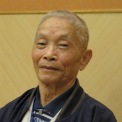
- Being sent to Paraguay developing the local battery industry
Paraguay was a small country in South America. The industrial development was relatively slow. The son-in-law of the President intended to develop the battery industry. He sought assistance from the local Chinese Embassy. The ambassador had a good relationship with the son-in-law of the President and advised him to seek technological support from Yong Gu Battery Factory. Yong Gu Factory recruited talents from Hong Kong and noted that Lo Lei Wo had worked for Hing Wah Battery Factory, which was a reputed factory in the industry. Lo was immediately employed and assigned to Paraguay. He was in charge of the production at the Pilas Paraguayas SA in Paraguay, and he taught the locals the skills of production. Lo was gifted in languages and he managed to use Spanish to ask about directions on the road and make counter offer within 3 weeks. After Lo had worked in Paraguay for one year, he want to leave Paraguay as the share market in Hong Kong recovered and he also missed his family. The son-in-law of the President had tried to retain him, but he rejected the offer and returned to Hong Kong.
Yung Gu Factory seconded 8 Chinese staff to Paraguay, 4 from Hong Kong (3 previously employed by Hing Wah Factory) and 4 from Taiwan (permanent staff). 4 staff returned to their home country after 1 year. Lo Lei Wo believed that the battery technology of Hong Kong was better than that in Taiwan. Taiwan batteries were mainly sold in the domestic market while Hong Kong's battery were marketed internationally. Tp catch up with the international standards, local battery factories in Hong Kong had tried to learn from overseas professional publications and studied the formulae of foreign products from dissecting their batteries. Hing Wah In the early period, local Hong Kong factories did not do chemical analysis themselvesbut sent the materials to the laboratory at the University of Hong Kong for chemical examination.
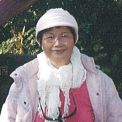
- Ah Ying starts a sewing workshop at home to do sub-contracted jobs from factories. How she ran he...
After she got married, Ah Ying continued to work at the Tsim Sha Tsui embroidery factory and only left after her first son was born. She then made ends meet by working on sub-contracting jobs at home. By the time her youngest son studied in primary school, she had been away from her vocation in fashion for 10 years. As the space in Ah Ying’s home was limited, she could only install basic equipment like a sewing machine and electric iron. Ah Ying preferred to take orders of sewing embroidery which required her fine skill in sewing a whole piece of garments. Initially, Ah Ying only took jobs from her former employer and a Mr. Lai who had a medium-sized garment factory. Mr. Lai also made samples of clothing, for the coming batches of high-priced garments consisting of around 30 to 40 pieces. Mr. Lai was sincere asking Ah Ying to work for him. She therefore made samples of whole piece garments for Mr. Lai so that he could show the sample to his workers in the factory who produced a larger volume of products in different divisions. After successfully completing her first sub-contracting order, Ah Ying continued to help Mr. Lai on a regular basis. Back then, the garment industry had a special practice. A customer would place an order to a factory and inform the factory of the details of the garment required. The factory produced a sample of the ordered garment. When the customer was satisified with the sample, he would make an order of 8 to 10 pieces of garments Sometimes when a garment factory could not meet the deadline, it would outsource the job to sub-contractors who were famous of their skills and workmanship.
As sub-contracting for one company was not a stable job, Ah Ying worked for other factories as well. Every year, she made overcoats at home after the Mid-Autumn Festival, collecting flannel from various garment makers. Due to the high value of the raw materials, she needed a referral or guarantor before she was assigned the work. Ah Ying thought that it was easier to make overcoats as a quick worker could finish one whole piece in around 90 minutes, while it would take 2-03 hours for a slow worker to make one whole piece. She stopped making overcoats around winter solstice because her products were reserved for the Spring Festival. More luxurious overcoats were sold in Nathan Road, while lower-priced ones were sold in Yu Chau Street. Ah Ying preferred to make the more expensive overcoats because the extra income came in handy at Chinese New Year.

- Moving to work in Shanghainese-run factory: Tai Wah Weaving and Garment Factory and Luen Wah Weav...
In those days, female workers were in short supply. Leung Pui Ching learned of the job opportunity in the Tai Wah Weaving and Garment Factory from recruitment notices and the message from other workmates. It was a Shanghainese-run factory in To Kwa Wan. Under the introduction of a workmate, she was employed without any tests. When Leung Pui Ching applied for the Hong Kong Identity Card, she claimed to be 22, which was two years older than her actual age. The Shanghainese factories paid higher wages and workers were entitled to holidays too. Later, she changed to work in Luen Wah Weaving Factory (also a Shanghainese factory) in Tsuen Wan. Luen Wah provided workers with a dormitory but the condition of the workshop was disappointing. It was an enclosed unit with a wet and slippery floor and poor air ventilation. In Luen Wah, each worker attended six machines. They worked 12 hours a day from 7 am to 7 pm with one day off per week. Workers working for irregular shifts did not have fixed holidays. The Shanghainese factories had higher output. They used automatic machines and produced white cloth and twill for military purposes. At the prime, each worker attended 16 machines. The automatic machines were easy to operate. With the basic skills learned in the Cantonese factories, Leung Pui Ching mastered these machines easily. But due to the frequent accidents caused by automatic machines and the poor working environment, Leung Pui Ching felt that it was a hard job. The proprietor was demanding and the factory was run by more rigid rules and strict management. A sick worker had to work as usual otherwise he would have his wage deducted. Workers who was absent from work would lose the attendance bonus. Leung Pui Ching had problems with her feet because she was fatigue from work. Later she resigned from Luen Wah as she couldn’t sustain the heavy workload and decided to study full-time. After she got married, she worked as a denim weaver.
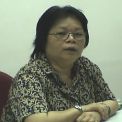
- Social gathering and entertainment with factory sisters during her youth
As a youth, she loved cruising and having mah-jong games or parties with friends and workmates when she had leisure time. When she joined Fung Lee at 18, she made friends with some boat people who knew how to steer a boat. On holidays, they would set sail from the public pier in Tsim Sha Tsui to Deep Water Bay or Repulse Bay. She said the bay scenery was much prettier than what it is today because the sky was bluer and the cloud whiter. She could not swim but she kept herself afloat with a kickboard. Sailing was an expensive activity. A boat trip needed several dozen dollars. At the time, she earned a monthly wage of about $1,000.
The grandmother of one of her friends was a boatwoman who took passengers from Mong Kok Ferry Pier on Nelson Street to the performance boats in the Yau Ma Tei Typhoon Shelter. The beautifully decorated performance boat had a young lady who played the yangqin and sang at the bow. A 2-hour cruise charged an expensive fee of $7 or $8. Sometimes, To Sui Wan had mah-jong games with friends on the grandmother’s boat. Each player had to pay her $40 each time. They usually set off at 11pm and had mah-jong games for five or six hours. They directly went to work in the morning after the game. On one occasion, when they arrived at the seashore at 11pm, the grandmother was off with her customers so they rented a room in a guesthouse and played mah-jong games overnight. For several decades, the scene of mah-jong games on the boat always come to her mind. Memories of her youth amused her, but she would describe her childhood as ‘silly’. Her family did not know what she did in her leisure time.
In the 1970s, To Sui Wan lived in a 7-storey low-cost housing estate. Many tenants had parties in their spacious units and opened it to strangers for a fee of $5. To Sui Wan would occasionally attend such home parties. Some parties only charged the males but not the females. To Sui Wan never attended such parties although they were free of charge. She would only attend parties held by people she knew. In those days, parties were held for the purpose of preying on young female factory workers. The organizers waited outside the factory and invited them to the parties when they left the factory after work. Such parties were held for wicked purpose, some young girls were raped when they lost their consciousness after drinking drugged beverages. The low-cost housing was a black spot of crime. The residents of the district always discussed news of raping. Some of her friends knew the dance hostess managers or gangsters. They told her about these incidents so that she would not be cheated. She learnt about such events in Hong Kong when she studied in Guangzhou from her teachers. She was told to be alert and to protect herself. To Sui Wan chose her friends carefully. At first, she socialized with her workmates and made good friends with eight workmates. Seven of them were workers and one was managress. Their ages ranged from 18 to 20 and To Sui Wan was the youngest. In comparison with other friends, she was closest with them. They would help, take care of and refer jobs to each other. After she left the knitting industry and joined the garment factories, she seldom met them. When they all got married, they met even rarely. Now, they only meet in feast gatherings.
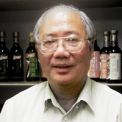
- A review of his 40-year career in Amoy Food: started his career at the very bottom, strong sense ...
Cheng Yum Kwai joined Amoy in 1966 and has now been working with the company for over 45 years. While still a youngster, he started his career at the very bottom and gradually worked his way up to become manager of the engineering department. Amoy’s managers were often specially recruited from outside, and internal promotion of employees like Cheng Yum Kwai was very rare. Always modest, Cheng Yum Kwai often mocked himself as having the lowest academic qualification among all Amoy managers. Today, he says that he feels fortunate that even though Amoy has changed ownership several times, he has always received generous remunerative treatment from each new investor. As a result, his sense of loyalty to Amoy endures to this day.
On the eve of the Hang Lung Group’s buying into Amoy, Cheng Yum Kwai was vice chairman of the Staff Welfare Association. When the Sime Darby Group sold its shares to Hang Lung, the founding owners Cheng and Huang families were not informed of it. The majority of employees disapproved Hang Lung’s acquisition. Representing the Staff Welfare Association, Cheng Yum Kwai negotiated with Hang Lung’s directors and conveyed the views and emotion of the staff. When Hang Lung eventually took over Amoy, Cheng Yum Kwa iworried that his new employer might fire him because of this. Happily, Hang Lung’s directors chose to bury the hatchet, forget old grudges and give trust to Cheng Yum Kwai. So much so that they eventually promoted him to important management positions in both 1982 and 1984. Cheng Yum Kwai has always been diligent about meeting his responsibilities over the years and has never been lazy. He repeatedly attended training courses arranged by Amoy and learned a lot of management knowledge and life skills. He also inspected different plants to gain more experiences, occasionally visiting Amoy’s mainland plants, and sometimes even touring competitive companies’ facilities.
Copyright © 2012 Hong Kong Memory. All rights reserved.
| Set Name |





